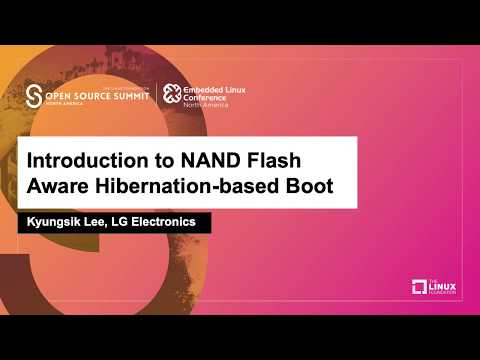Description:
Explore a conference talk on NAND Flash Aware Hibernation-based Boot techniques for consumer electronics. Learn about the importance of boot time reduction and the challenges of implementing hibernation-based approaches while considering NAND flash reliability. Discover innovative methods to extend NAND flash lifetime without compromising performance, including log-structured block management, cluster types, and disk layout optimization. Gain insights into deduplicating pages in memory, optimizing image size, and implementing efficient garbage collection. Understand the impact of these techniques on boot time, image loading performance, and data write amounts. Delve into the speaker's experiences developing new features for the mainline kernel to address these challenges in consumer electronics.

Introduction to NAND Flash Aware Hibernation-based Boot - Lecture
Add to list
#Computer Science
#Information Technology
#Linux
#Linux Kernel Development
#Memory Management
#Garbage Collection